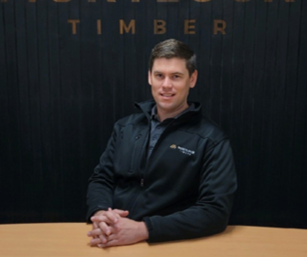Timber vs metal battens | Be mindful of which one you choose
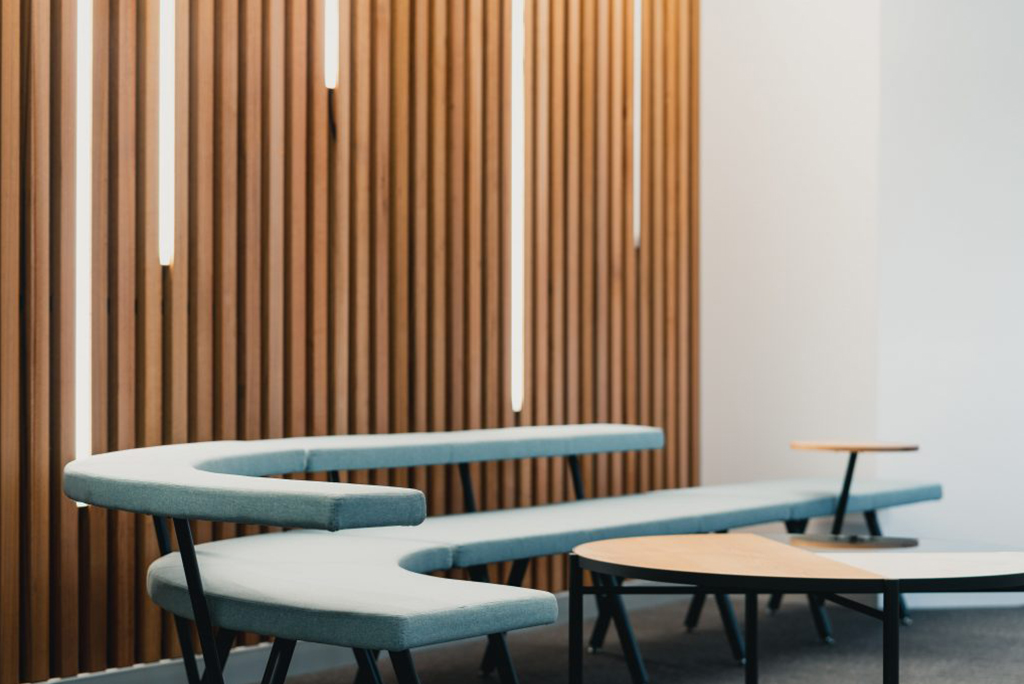
When you’re comparing timber vs metal battens, it’s not just a decision about aesthetics. It’s about warmth, sustainability, long-term performance, and how these materials feel in your space. Timber vs metal battens is an ongoing debate in architecture and design across commercial and residential projects. Whether you’re cladding a striking facade or crafting a seamless interior feature wall, your choice will impact the look, feel, durability, and environmental footprint of your design.
Timber vs metal battens: the first impressions
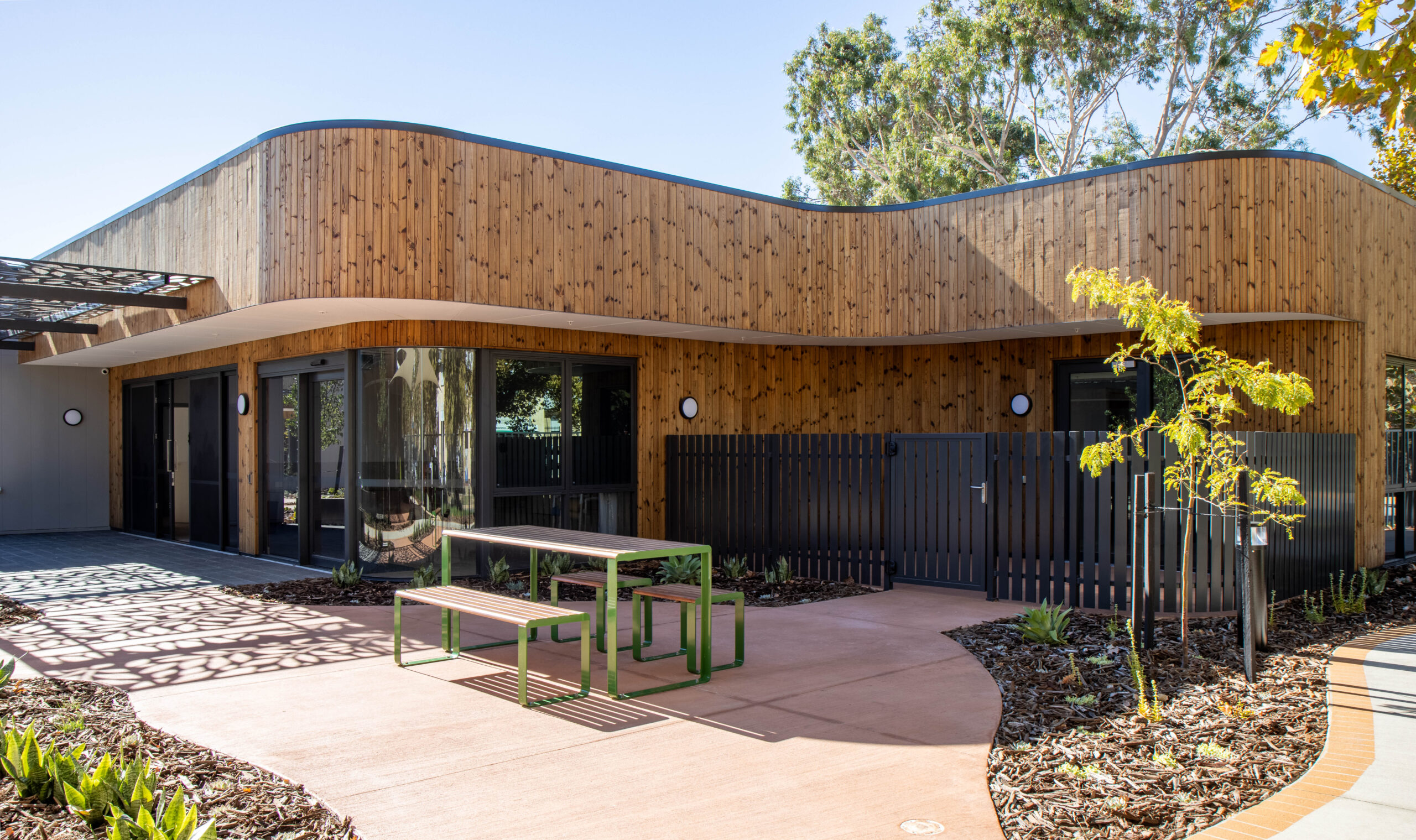
First impressions matter. Timber battens offer an undeniable natural beauty that metal cannot truly replicate. Even the most high-end wood-look aluminium, such as Knotwood or DecoWood, struggles to capture the depth, texture, and soul of real timber. You only need to walk into a space clad with rich timber battens to feel the difference. Timber has this way of making an environment feel more grounded and more alive.
Metal battens, on the other hand, can feel colder. Even timber-look aluminium can lack the tactile softness that timber brings. If you want a premium, authentic aesthetic, timber battens will always stand out.
Visual appeal and authenticity
Premium hardwood timber, especially products like Mortlock Timber’s Satinplank, offers rich grain patterns and warm tones that age beautifully. Aluminium systems may try to imitate this, but they often look too uniform and lack the subtle variations you’d find in real timber. When timber is sourced responsibly, you’re also choosing a material that supports a sustainable future.
Durability and fire resistance of timber vs metal battens
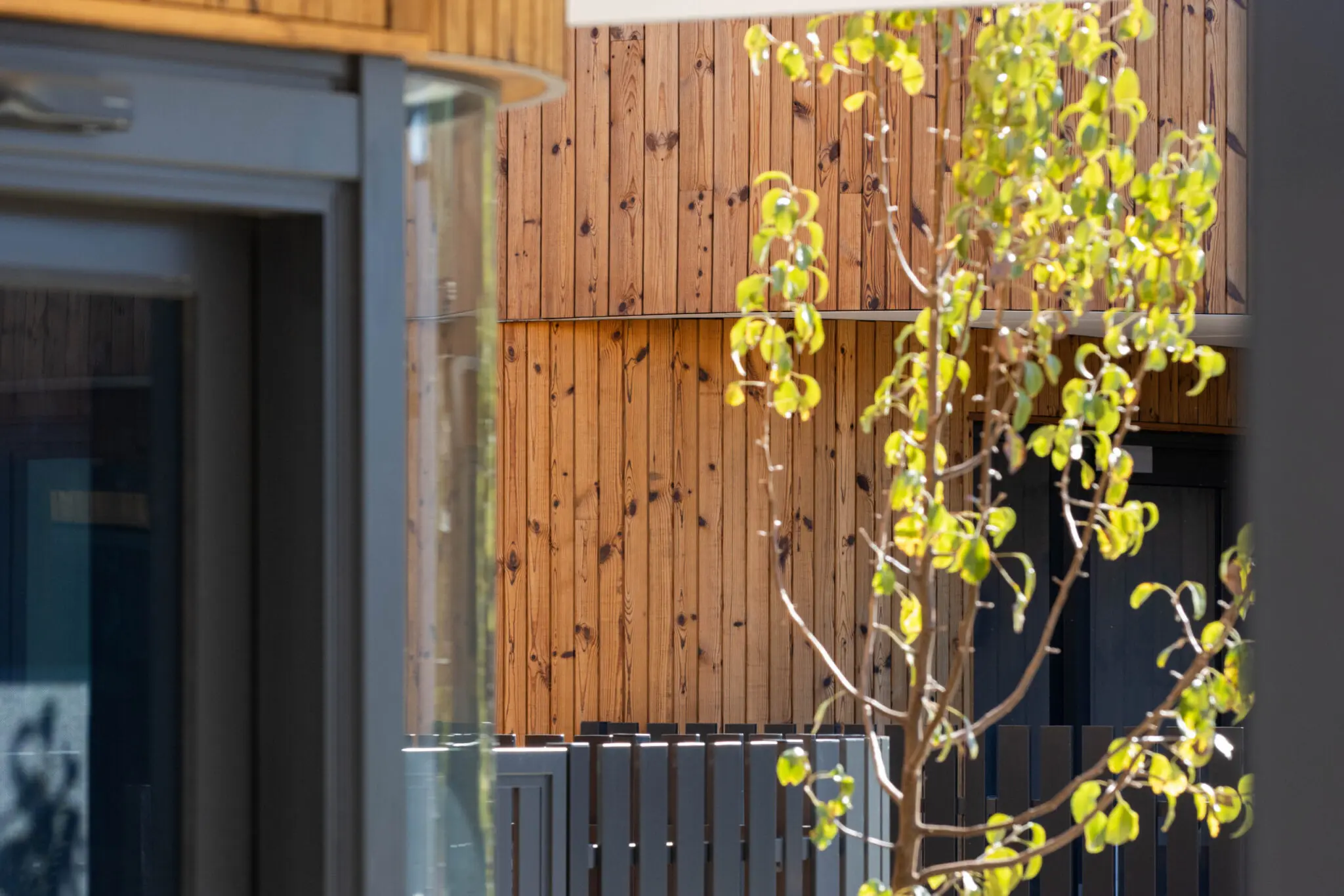
There’s a reason architects often lean toward aluminium battens for commercial buildings. Aluminium is non-combustible and fire-resistant. That can be a significant advantage, especially under stringent fire safety regulations for high-rise buildings and public spaces.
That said, timber battens can also perform well with the right design. Products like thermally modified timber—which Mortlock Timber specialises in—offer enhanced stability and durability. When properly treated and maintained, timber battens can last decades, gracefully weathering into a silver-grey patina that looks striking.
Real-world performance
One notable feature of timber battens is their dimensional movement. Timber is a natural material that expands and contracts as moisture and temperature fluctuate. However, advances like thermally modified timber greatly reduce this movement and improve its durability, making it a strong choice for a stable, long-lasting installation.
Metal battens don’t move with moisture, which simplifies some design considerations. However, they have their drawbacks too. Metal can conduct heat into walls, making buildings less energy-efficient, especially in direct sunlight. Timber, by contrast, is a natural insulator and can help reduce energy consumption.
Maintenance and weathering of timber vs metal battens
Both timber and metal battens require some level of maintenance. This is where client expectations need to be managed early.
Timber: regular care for a timeless look
Timber will always require more maintenance. Left untreated outdoors, it will naturally weather to a silver-grey over time. Some designers embrace this aged aesthetic, but if you want timber to hold its rich colour, a regular coat of oil or a protective finish like CUTEK CD50 timber finishes will preserve its hue and slow the ageing process. Low-maintenance options like shou sugi ban (charred timber) or Woca oil can also enhance durability with periodic re-application every few years.
Metal: low maintenance but less character
Aluminium battens, especially wood-look options like DecoWood or Sculptform’s wrapped aluminium, require little upkeep. Simply wash them down periodically and they’ll retain their uniform look for years. However, they’ll never quite capture the evolving beauty of timber — they simply look the same year after year.
Acoustic and thermal performance of timber vs metal battens
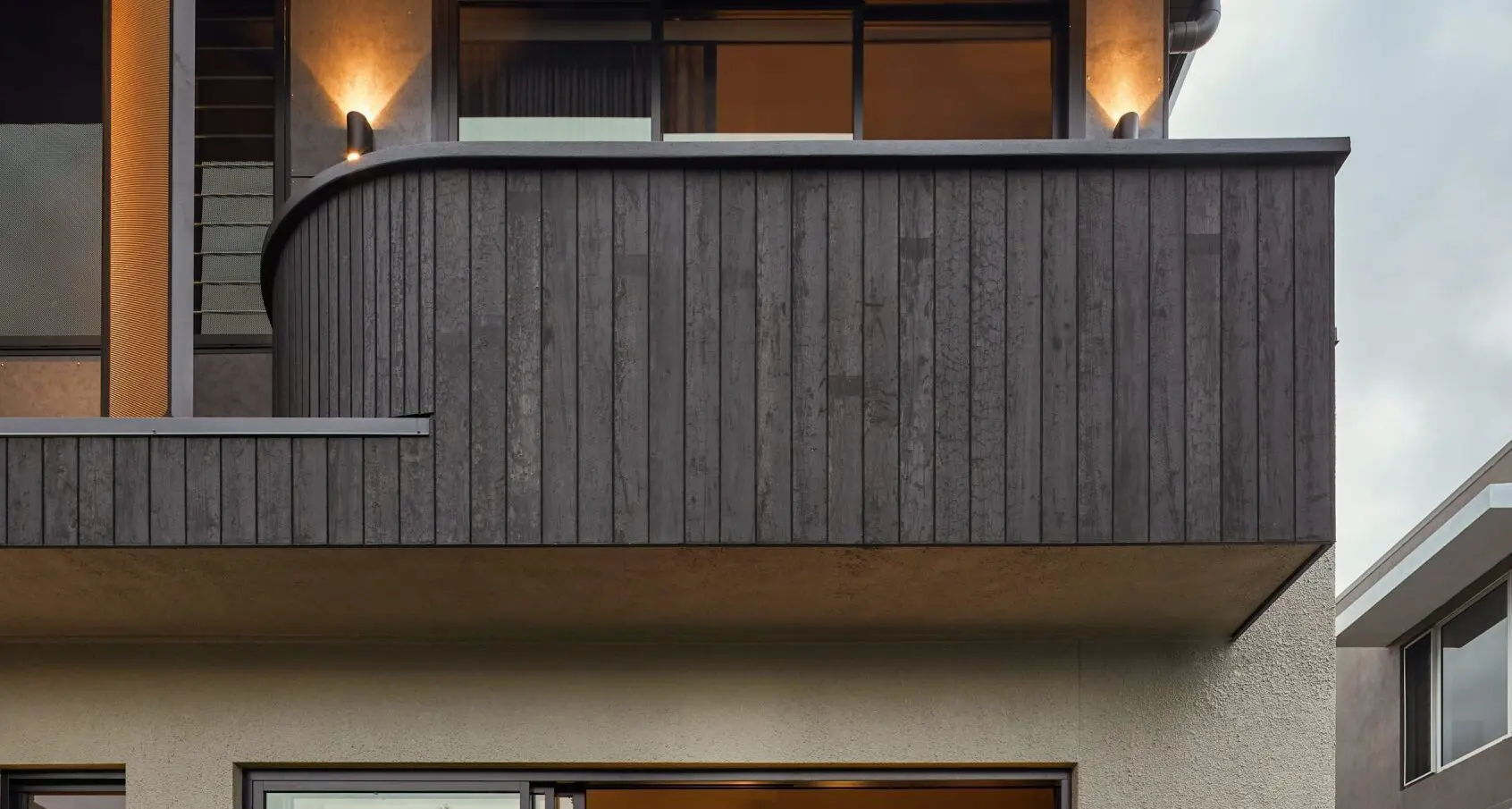
If you’ve ever walked into a large commercial lobby or cafe with aluminium battens and hard surfaces, you’ll know that metallic materials can amplify sound rather than absorb it. Timber battens contribute to better acoustics, creating a softer, more comfortable sound profile. Timber also excels as a natural thermal insulator—perfect for creating a more energy-efficient, welcoming interior. Metal, being a thermal conductor, tends to transfer heat into walls and ceilings, which can reduce energy efficiency.
Cost considerations of timber vs metal battens
When looking at timber vs metal battens, cost is always going to come into the equation.
Material and installation cost
Surprisingly, raw timber is often less expensive than high-quality, powder-coated or wrapped aluminium battens. Plus, timber is relatively easy to cut and install with basic carpentry skills, which can reduce labour costs.
That said, maintenance will add to timber’s overall life-cycle cost. Even if you choose a low-maintenance finish like shou sugi ban, you must budget for periodic upkeep to keep your timber looking its best.
Aluminium, on the other hand, is typically more expensive upfront, especially if you choose premium timber-look finishes. However, it requires minimal maintenance after installation.
Sustainability and carbon footprint
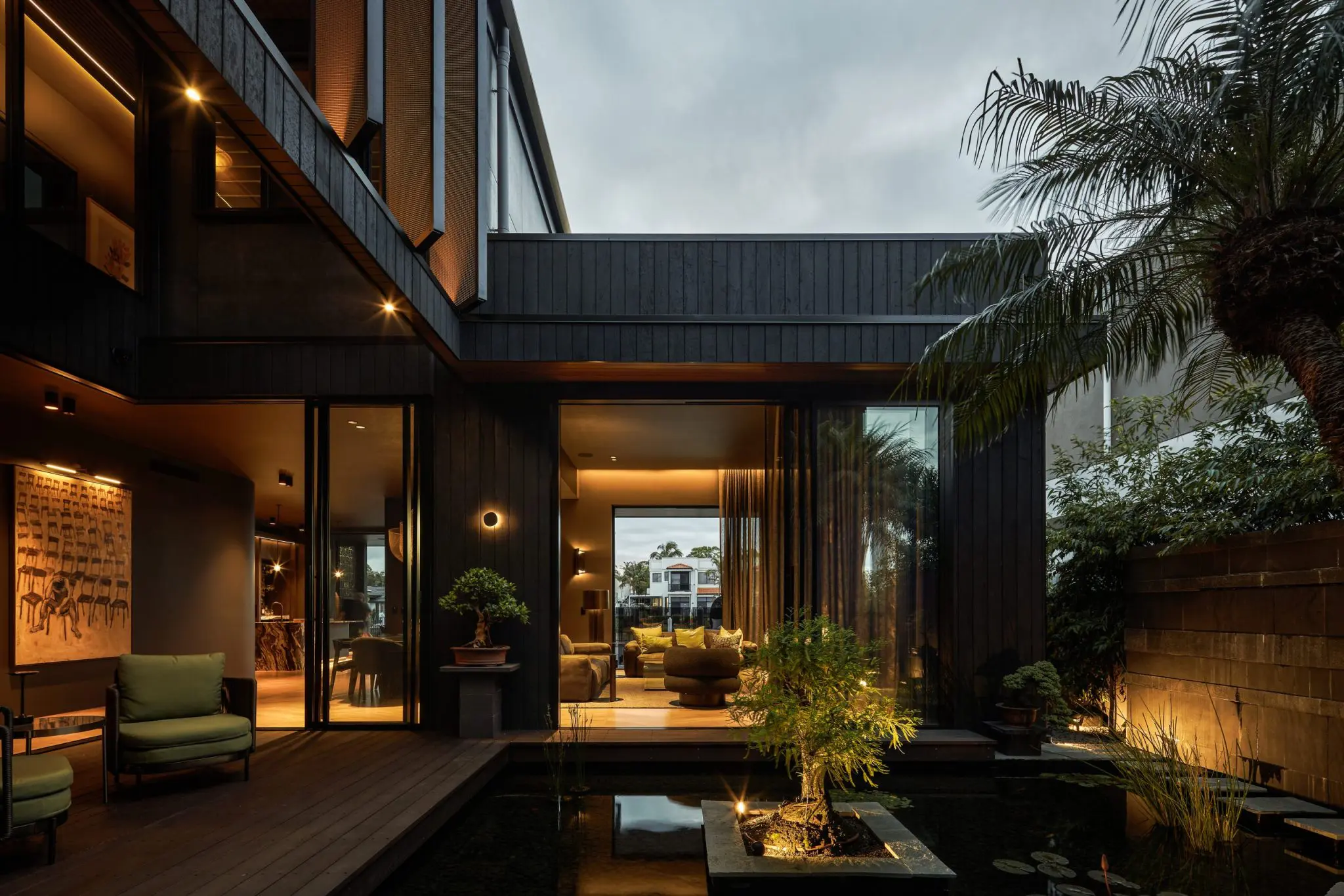
If environmental impact is a concern for your project (and it should be), timber battens win, hands down.
Timber is a renewable resource that stores carbon for its entire lifespan. Every tree harvested can be replanted as part of a sustainable forestry cycle. Timber’s embodied energy, the energy required to produce and process the material, is also vastly lower than that of metal, making timber one of the most sustainable cladding options available.
By contrast, aluminium battens require significant energy to extract and manufacture. Even recycled aluminium cannot match timber’s renewable quality.
Choosing the right battens for your project
When deciding between timber vs metal battens, it all comes back to your design goals and priorities. If you want a material that is warm, natural, sustainable and authentic, timber is the obvious choice. For interiors or exteriors, timber battens offer timeless appeal, a softer acoustic profile, more effective thermal performance and are better for the planet.
Timber vs metal battens | Make a thoughtful choice
The timber vs metal battens debate isn’t one-size-fits-all. Both materials have strengths and compromises, and the decision comes down to your design ambitions, your budget and the long-term performance you need. If you want a premium, warm aesthetic that celebrates the beauty of natural materials, timber battens—like those crafted by Mortlock Timber—are an elite choice.
Explore our range of timber wall solutions and timber ceiling solutions, or contact us today to discuss how we can help you realise your next design vision.
View our pricing and product guide
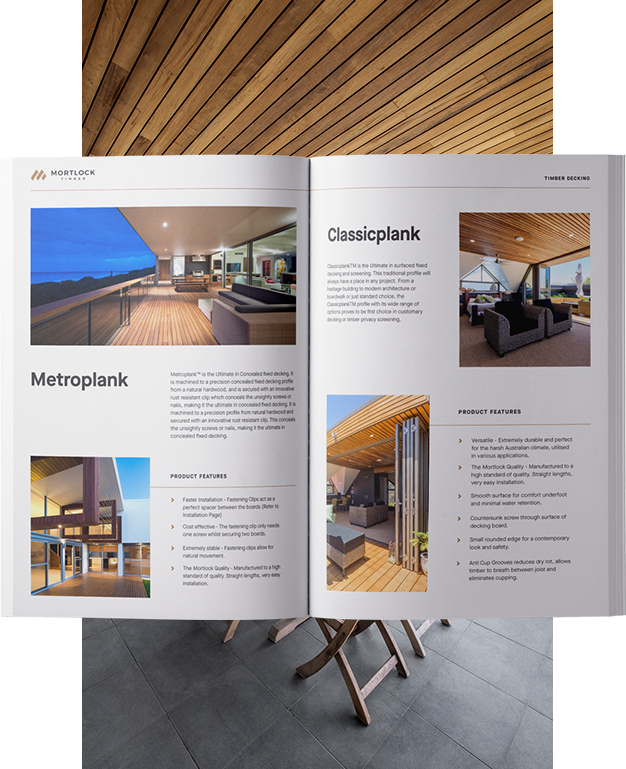
We are committed to bringing you timber products that add value and endure for years to come, even in heavy traffic and harsh weather conditions. We understand the value of efficiency when it comes to installation and keeping hardwood timber costs down. That’s why we’ve spent decades perfecting our designs to make them easier to handle, less wasteful and more efficient to install. This efficiency allows us to offer you premier products that are more cost-effective so that you can experience greater savings on timber wall costs, timber ceiling costs, timber cladding costs and timber decking costs.
Download our Pricing and Product Guide for our complete hardwood timber price list including timber decking prices, timber wall prices, timber ceiling prices and timber cladding prices.
